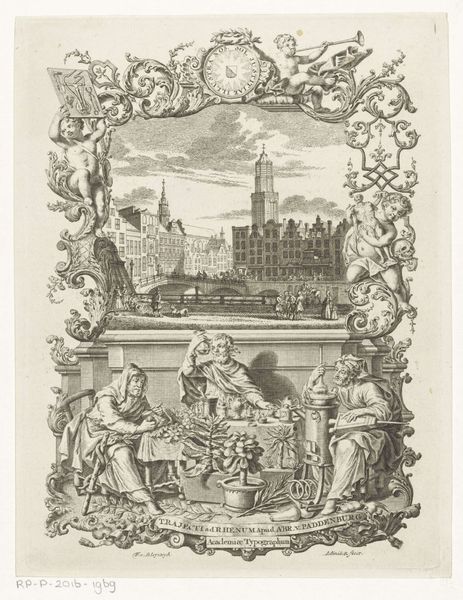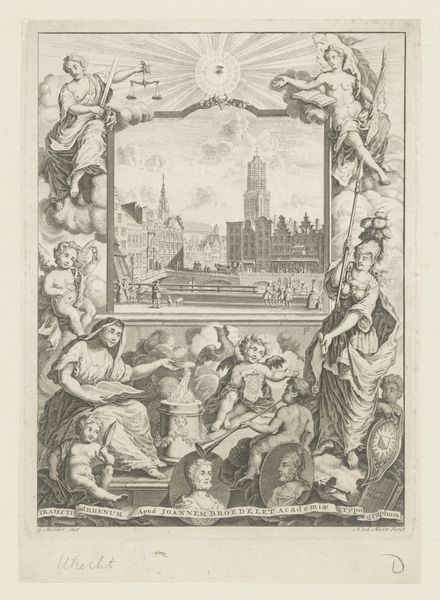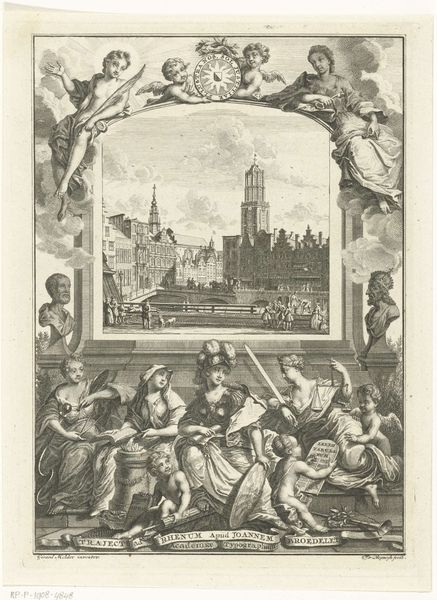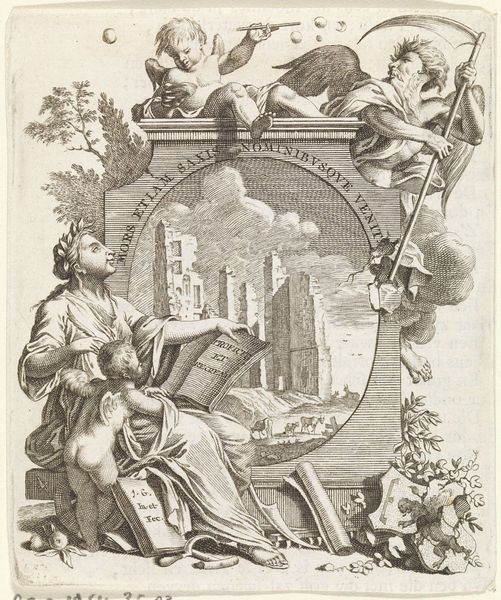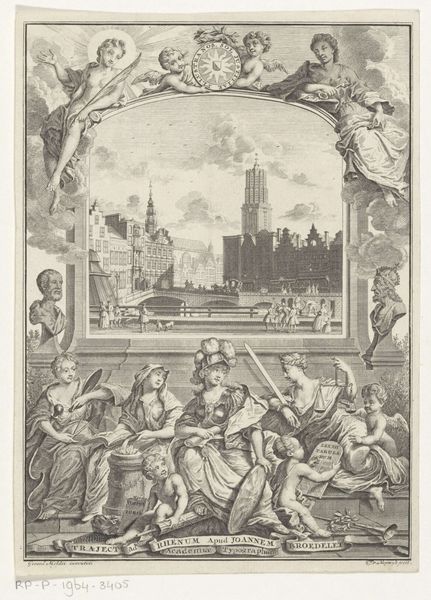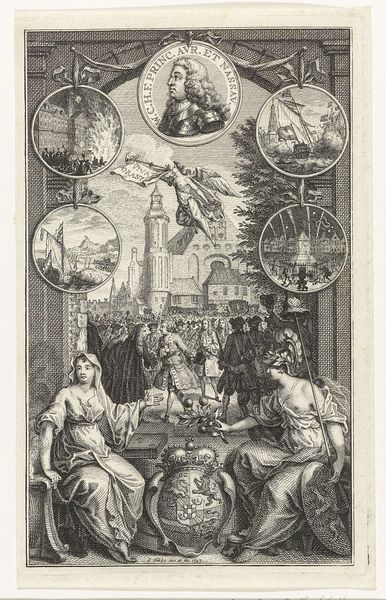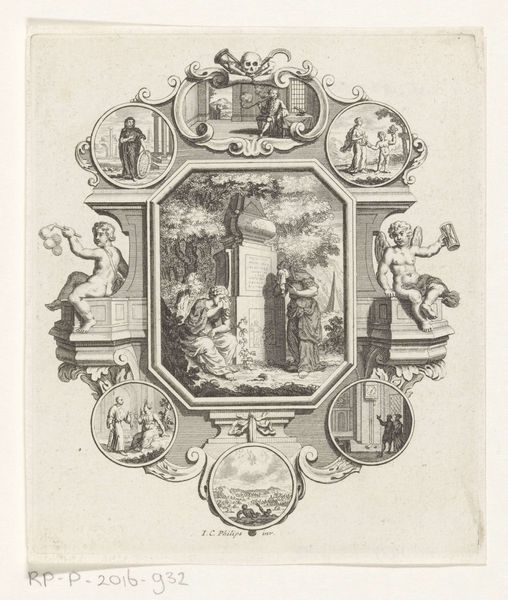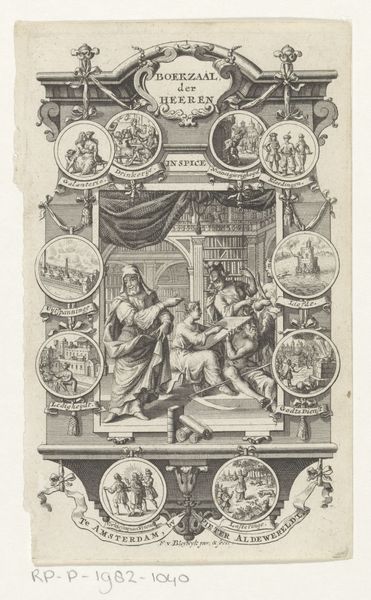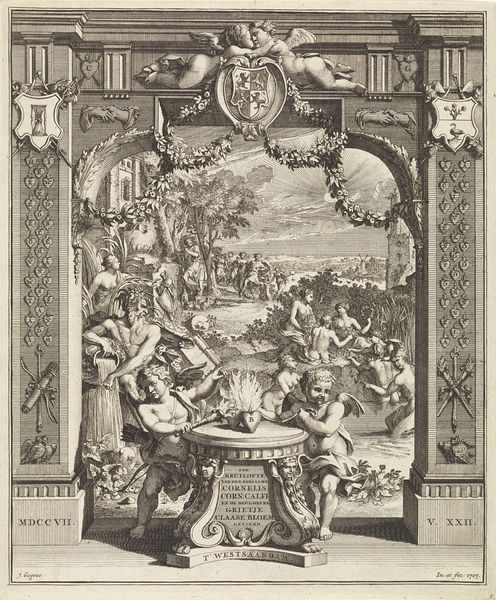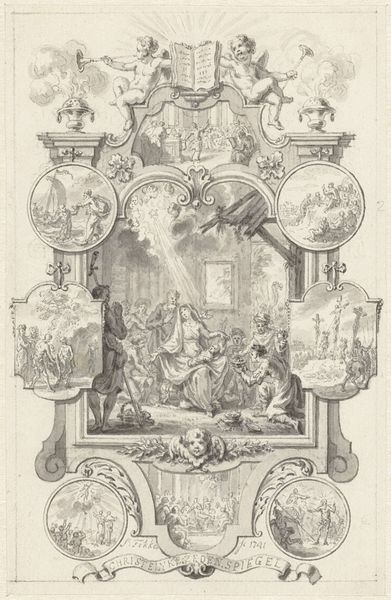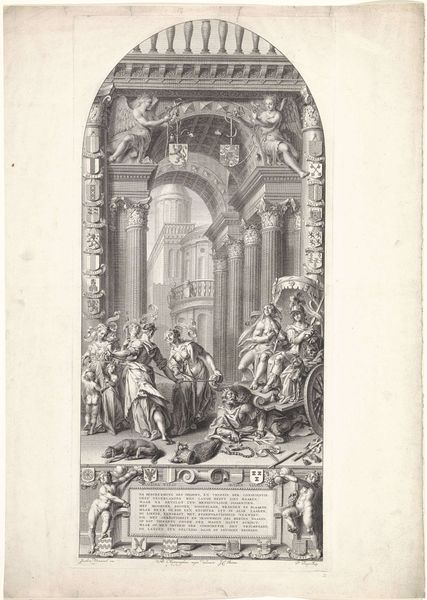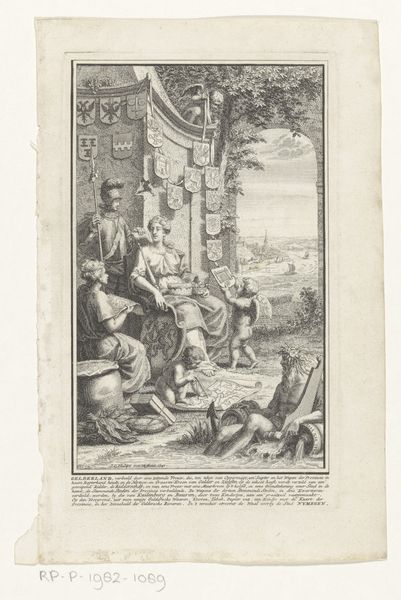
Stadsgezicht met Domkerk te Utrecht en allegorie met drie geleerden 1681 - 1746
0:00
0:00
print, engraving
#
portrait
#
baroque
#
dutch-golden-age
# print
#
old engraving style
#
figuration
#
cityscape
#
history-painting
#
engraving
Dimensions: height 242 mm, width 183 mm
Copyright: Rijks Museum: Open Domain
François van Bleyswijck created this etching, "Cityscape with the Cathedral of Utrecht and Allegory with Three Scholars", sometime before 1746. The printmaking process is an indirect one. The artist first incises an image into a metal plate, which is then inked and pressed onto paper. Here, the technique allows for remarkable detail, seen in the intricate rendering of the Utrecht cityscape, framed by allegorical figures and baroque ornamentation. Consider how the sharp lines and tonal contrasts are achieved. The artist would have used tools like burins and etching needles to carefully cut into the metal, controlling the depth and width of each line. Acid may have been used to further etch the plate. Printmaking was a skilled trade, demanding precision and patience. It was also a business, allowing images and information to be disseminated widely. Here, we see how van Bleyswijck elevates the status of printmaking by associating it with scholarship and artistic skill, blurring the lines between craft and fine art.
Comments
No comments
Be the first to comment and join the conversation on the ultimate creative platform.
